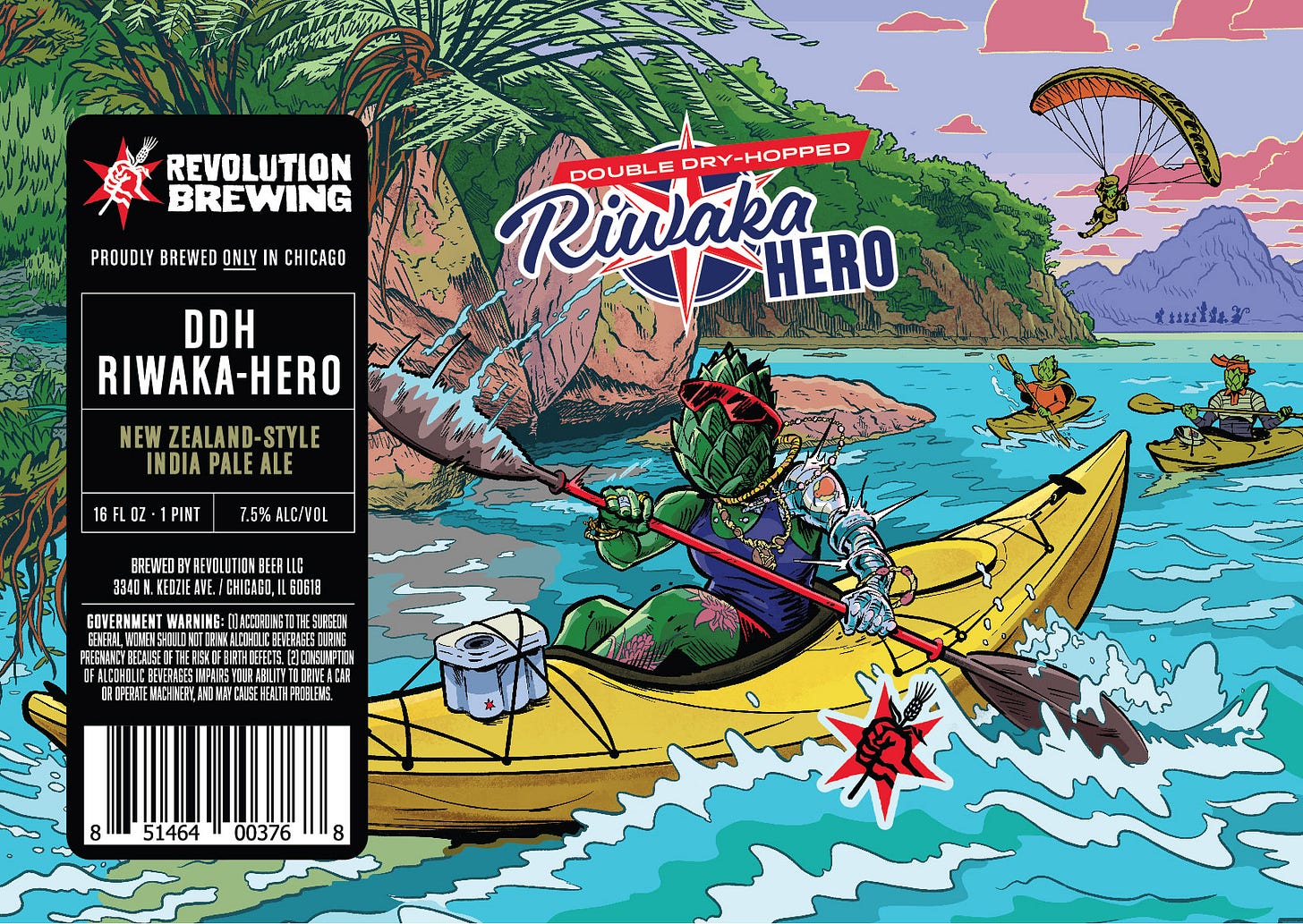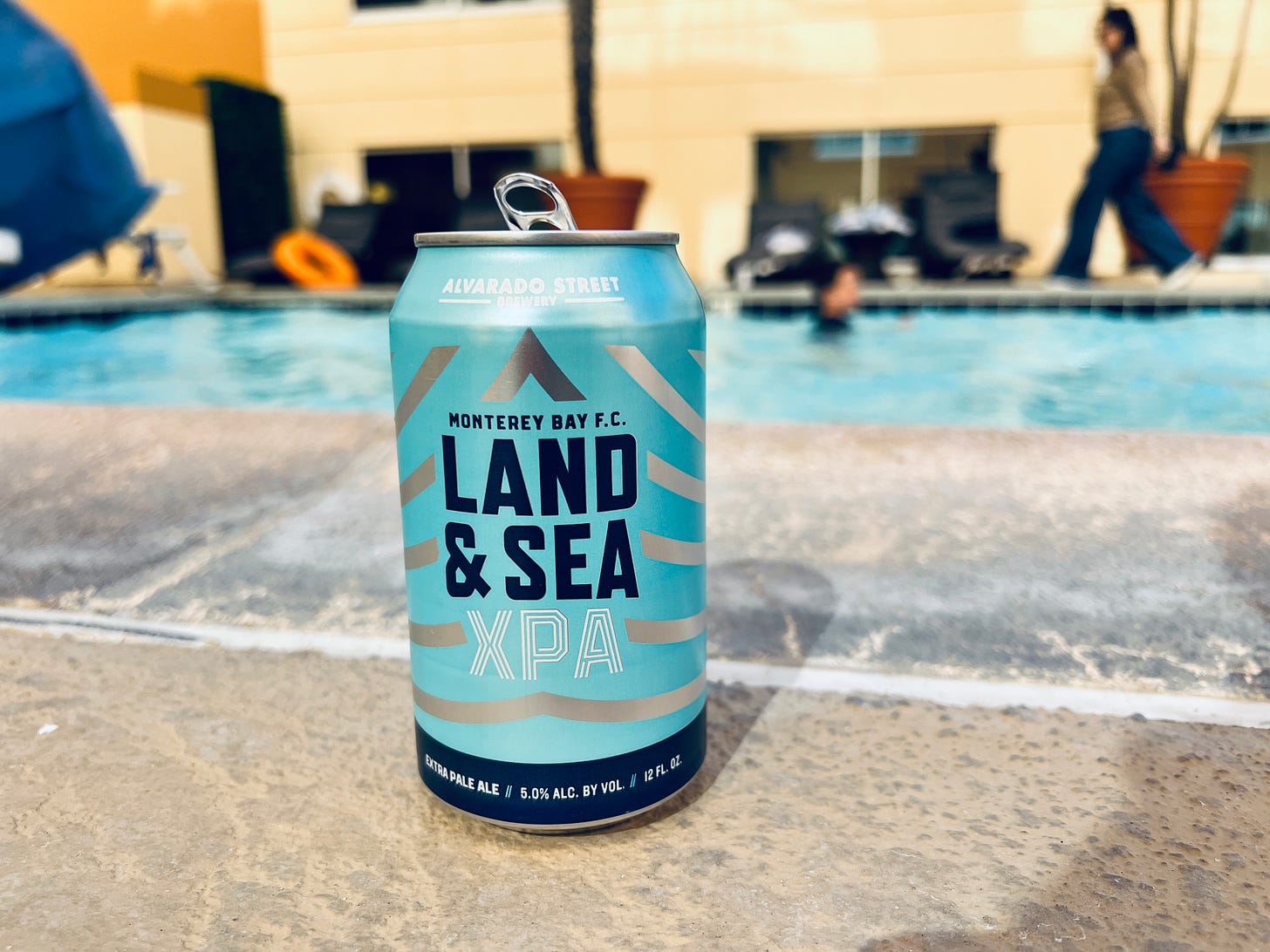2024 Trends I Didn't See Coming
Despite Nostradouglas’ uncanny ability to see the future of the beer industry before it unfolds, a number of trends still sneak their way into the cosmos that he didn’t see coming. These could range from interesting micro strategies being used to draw consumers into taprooms all the way to national news that could give the wider beer category newfound momentum. Let’s walk through three very different examples.
1. The XPA
The New Zealand Pale Ale and IPA became official styles recognized at the Great American Beer Festival in 2021, known for hop aromas and flavors including tropical fruit, passionfruit, stone fruit, cut grass, or diesel. The BA Style Guidelines don’t specifically call out the requirement to use of hops native to New Zealand, but not doing so feels like a missed story-telling opportunity and a bit of a breakdown in logic.
As far as NZ varieties, Nelson continues to own the hearts and minds of US beer enthusiasts with its reign lasting well over a decade now. More recent introductions like Riwaka and Nectaron are two of the most impactful hops I’ve ever worked with. This trio, along with many others, make the New Zealand IPA a compelling sub-style to build excitement in today’s IPA landscape. As breweries explore more of a middle ground between dry/bitter/classic and sweet/hazy/contemporary, these incredibly impactful hops are given more of a chance to stand out. Designating the style as New Zealand IPA on the beer’s label gives due credit to the additional intention and exoticness, whiling adding intrigue to the consumer.
As big name West Coast brewers began sinking their teeth into the potential for these exciting Southern Hemisphere hop varieties, their love of the Extra Pale Ale seems to have been reinvigorated in the process. The style in name is nothing new as Hop Culture points out in this great deep dive. Atlanta’s Sweetwater Brewing has been brewing their 420 Extra Pale Ale in the United States since 1997. In my hometown of Chicago, breweries like Half Acre were making their own interpretation ten years ago with Tuna being a top ten all-time Chicago beer for my tastes.
While competing trends and the unsexy style name are were certainly culprits for Tuna’s inability last as a year-round brand, the market simply may only be able to bear one year-round Pale Ale from a given brewery, due to cannibalization. For brewers without a workhorse like Daisy Cutter leading their portfolio, the Extra Pale Ale may become the sexy new way to attack the more “sessionable” IPA opportunity that’s always been there, with a few key modifications that borrow from the New Zealand-style.
The combination of Pale Ale’s low ABV with 1) more pale malt for an extra crisp drinking experience and 2) exciting NZ hops like Nelson that are becoming much more affordable, gives a fresh coat of paint to a well-established but historically undefined beer style. Adopting the term “XPA”, popularized in Australia, is a genius way to “rebrand” or perhaps just reintroduce Extra Pale Ale in the US. The shortened abbreviation captures the attention of Americans infatuated with the similar reading “IPA”, with the mysterious “X” adding a bit of curiosity. The lush, fruit-forward flavor of the NZ hops provides a clear differentiator from traditional Pale Ales using “C” hops, delivering on the desire for something new and flavorful while enhancing the drinkability.
Like this XPA pictured above from Alvarado Street Brewing that I recently plowed through three 6-packs of, Firestone Walker leaned heavy into Nelson for their big 2024 brand launch: XPA. They’re every bit as good as the classic XPAs, but updated to fit the times. Don’t believe me? Listen to the genuine excitement coming from the man himself talking XPA:
Keep reading with a 7-day free trial
Subscribe to Beer Crunchers to keep reading this post and get 7 days of free access to the full post archives.










